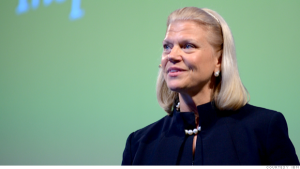“That’s the nature of the market and where we have a lot of opportunity, because we don’t play in some of those areas today.”
On Tuesday IBM said revenue for the last quarter declined across all major segments – hardware, software and services. Profits were down as well, though they beat the forecast of financial analysts polled by Thomson Reuters.
IBM sees cloud services as one of its best chances for growth, as sales of its more traditional products, including mainframes and Unix servers, continue to decline.
Two years ago it bought SoftLayer to help it compete with Amazon Web Services, and last year it acquired Cloudant, which provides a database-as-a-service, and Light House Security, another cloud provider. This year, it looks like more cloud deals will be in the works.
Meanwhile, CEO Ginni Rometty has been selling off businesses that produce little or no profit. In October, she announced a plan to sell IBM’s chip manufacturing business for US$1.3 billion to GlobalFoundries, and before that she sold its x86 server business to Lenovo.
So IBM’s revenue is shrinking in part by design, but it needs to expand its other, more profitable businesses to compensate for the losses. And that isn’t yet happening at a fast enough rate.
Revenue for the quarter ended in December was $24.1 billion, IBM said Tuesday, down 12 percent from a year earlier and less than the $24.77 billion analysts had expected. Net income was $5.5 billion, a decline of 11 percent.
IBM issued a new profit forecast for 2015 on Tuesday, predicting between $15.75 and $16.50 per share. That’s much lower than the $20 per share IBM had been aiming for until last October, when it dropped the prediction.
It says its growth in future will come from cloud, analytics, mobile, social and security. Those businesses generated more than a quarter of its revenue last year, at $25 billion, Schroeter said, though he didn’t explain how he arrived at that number.






